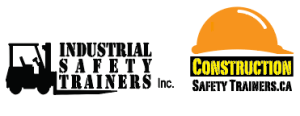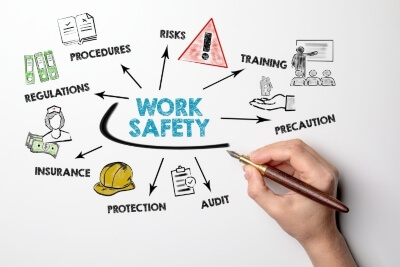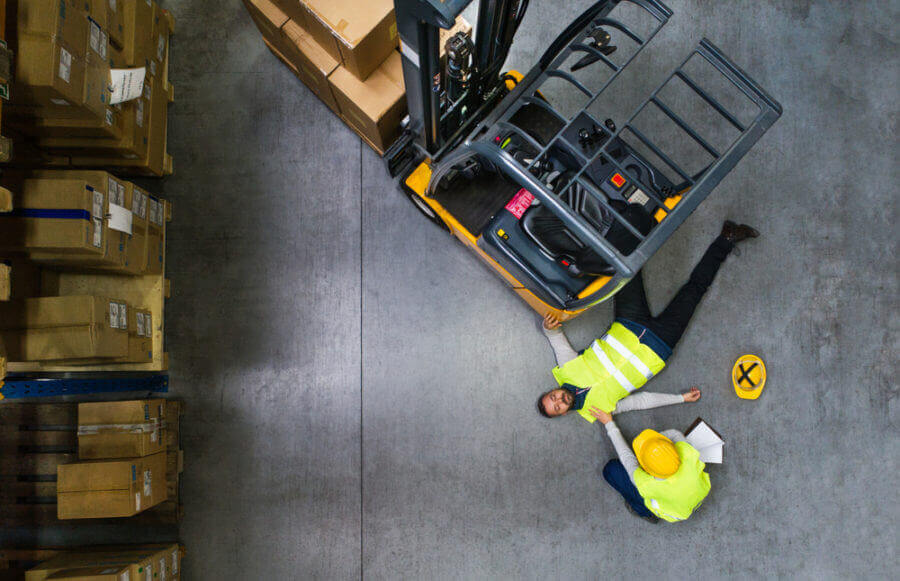Why Human Resources and Health and Safety are Essential Partners
Feb 23, 2022 Human Resources, JHSC, Safety Culture, Safety TrainingAs I approach my 5th anniversary at Industrial Safety Trainers, I am starting to reflect on how my career has been going. You know there is a reason why recruiters always ask where you see yourself in 5 years – it’s about career goals. So, time for some personal reflection.
As a Certified Human Resources Leader, I have had formal education in the nine core competencies of Human Resources. Obviously, Health and Safety is one of those, but I constantly field questions from clients about HR and H&S, and they do not seem to understand why a Human Resources guy is doing safety training. In larger organizations – yes, there can be the ability for two departments – but smaller companies? Why do you think health & safety is part of our HR education and designation exams?
Now, I am not saying that your HR department is all specialists; they can be generalists – and that’s where I come in. Although I have decided to specialize in occupational health and safety, I cannot help but notice how all the core competencies are intertwined. HR is everywhere.

What recently brought this to mind is actually an internal example for once. Recently, we had our annual training department meeting – and lo and behold – Change Management was a topic, and the flashbacks to my Organizational Behaviour (OB) courses started immediately!
For those that haven’t heard the term OB or have forgotten what it is, a quick google search will show you, “Organizational behaviour is a term used to explain the concept of the behaviour of individuals who constitute the human elements of an organization. This is related to human resources, which is a concept that is used to describe the Management of the employees in any organization” (asiapacific.edu).
Change Management specifically is an element of that, “as the application of a structured process and set of tools for leading the people side of change to achieve the desired outcome” (prosci.com). So, what you may be wondering at this point, what does this have to do with safety?
Industrial Safety Trainers is a training and consultancy company. We bring our knowledge and expertise into your organization, ideally to affect some sort of change. What we strive for is that our clients get value from our services. Our meeting about Change Management was to discuss methods we can utilize to help our clients understand where we fit into their overall strategic plan. Neat eh?
As trainers, we are assigned a topic and a client, and we go to deliver the course – but we are also very well aware of how well our information is received. We can tell if a client and participant just wants the certification paper, if Management is struggling to create buy-in to their safety program, or if everyone at that organization is the rockstar of occupational health and safety. Whether you want it or not, we as trainers are agents of change – it is realistically why we are there. Brace yourselves!
The reason we have no choice in the matter can be found in any of the Change Management methodologies. The one used at our meeting was the ProSci ADKAR. Their model is Awareness of the need for change; Desire to participate and support the change; Knowledge on how to change; Ability to implement desired skills and behaviours, and Reinforcement to sustain the change.
Reading that, I am sure you can see a trainer can fit into all of those elements, but awareness is what I would like to focus on in this post. Is your organization aware of what needs to change regarding health and safety?
In previous posts, I have discussed the four stages of learning; that model talks about how adults understand based on knowledge and experience. What I find most interesting is the number of organizations and participants that are generally surprised by the detailed content of our courses – no superficial glance with us, we are safety nerds at heart.
Now perhaps I have been doing this too long and take for granted the learning environment in which I work, but the information is out there if you look hard enough. So why is it people don’t bother? Perhaps they are not aware or do not fully understand their obligations under the OHSA or the Regulations or Codes of Practice – or getting more technical, reported decisions (CanLII is your friend) – check out how the courts see things from time to time.
What makes us agents of change by our very nature is bringing this awareness. Our job is to reaffirm what you know, remind you about what you forget, and shed light on what you didn’t know. You pick the course topic, and I can give you an example. Forklift? SOP on load center calculation. Overhead Crane? SOP on Rigging 3 to 1. EWP? SOP on Fall Protection equipment selection. LOTO? Don’t get me started on this one, lol. Health, Safety, and the Law? Wait what? You can get charged for that?

Now I don’t like writing posts on the same topics – your time is valuable, but I can’t help notice a correlation between the need to bring awareness of what needs to change and the RACE methodology. I have written about this many times before, and I am sure if you have taken any of the CPO-approved courses, it is not new, but I will do a quick recap for the uninitiated. RACE is Recognize, Assess, Control, and Evaluate. It is the process by which your JHSC makes recommendations. Much like the ADKAR model, it starts with the need to identify an issue. You cannot fix a problem you do not know exists.
So how to go about it? How to know everything? How can you predict the need for change in your organization? Let’s be honest there is no way to know everything, and if you can see the future, please email me the next lotto max numbers, but I doubt you can. A good start is admitting that change is always on the horizon, and having a system in place to accept it into your workplace when required might help alleviate those “growing pains.”
Stay vigilant, keep your eyes open, stay aware of current events – specifically for our purposes – with occupational health and safety. Getting into the habit of being the perpetual student of HR and H&S will heighten your recognition of potential and actual hazards. Don’t get complacent with the knowledge you already have (fourth stage of learning anyone?), be open to new knowledge as it comes, become your own agent of change.
Remember, if you want it or not, we at Industrial Safety Trainers are agents of change; we spread awareness, best practices, and new methodologies. That’s how we bring value to your organization. I don’t personally like to “rock the boat,” as it were when conducting courses at clients, but sometimes I get the feeling that’s exactly what I am doing. Some people don’t like that information, and best practices change – unfortunately, change wanted or not, is always possible. I’ve always been taught that “it is better to be looking at it than for it” – that way, you aren’t surprised by it.
So five years in, lessons learned? There is absolutely no way to know it all. Safety is a system, and we all have to work together. That system is the team you work in – that supportive network of peers and managers that all work together to get the job done. Perhaps with the importance of people here, HR and H&S have more in common than you originally thought.
To quote my boss David Ardito, “I am here to help” – so next time you see a trainer, pick their brains and stay ahead of the curve.”
Geoff Rowatt | CHRL






